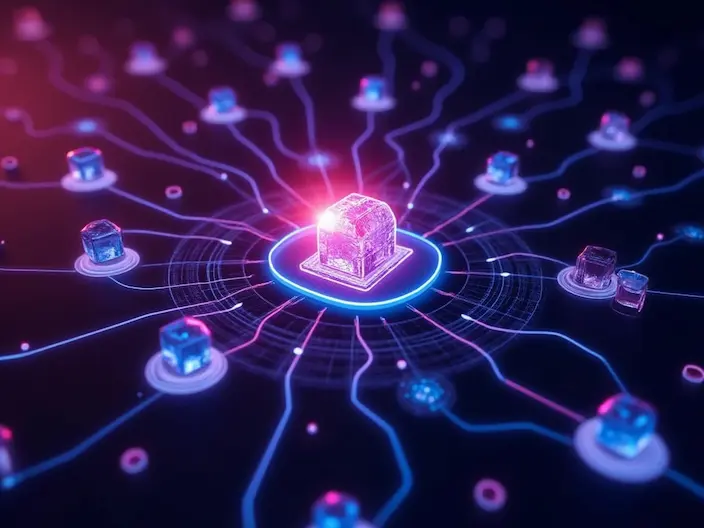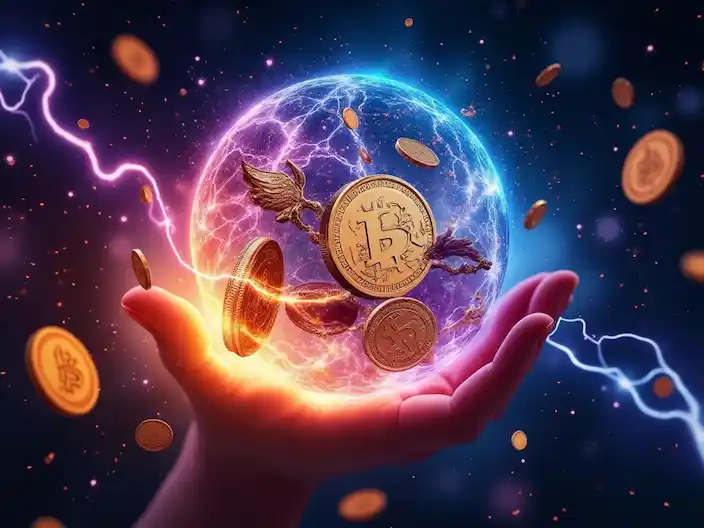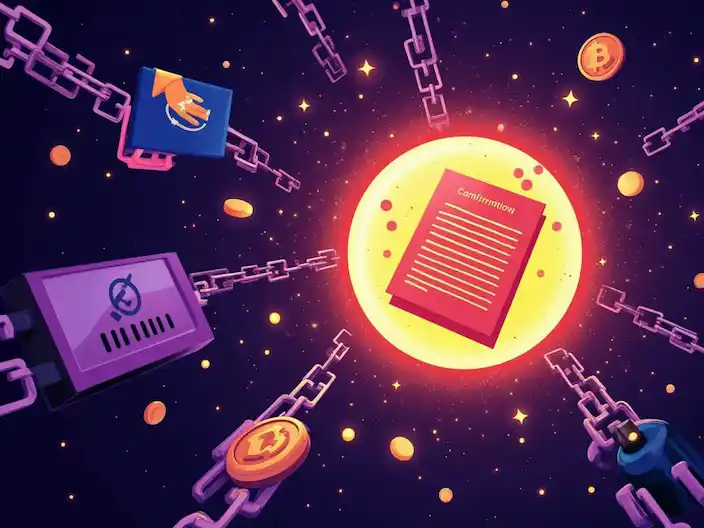Table of Contents
- Abstract
- Introduction
- Intellectual Property Challenges in the Metaverse
- The Decentralized Nature of the Metaverse
- Borderless Interactions
- Digital Ownership vs. Centralized Control
- Decentralization in Content Management
- Anonymity and Legal Challenges
- Legal Barriers and Challenges with National Law Compliance
- Legal Challenges in Contracts and Transactions
- Technical Challenges in Implementing Blockchain in the Metaverse
- The Role of Blockchain in Protecting Intellectual Property Rights
- Ensuring Transparency and Ownership Tracking
- Protecting the Rights of Authors and Artists through Smart Contracts
- Financial Rights Allocation in Secondary Sales
- Restricting Unauthorized Use
- Preventing Counterfeiting and Fraud
- Simplifying the Process of Intellectual Property Enforcement Globally
- Addressing Legal Issues Related to AI and AI-Generated Works
- Reducing Intermediary Costs in Protecting Intellectual Property Rights
- Practical and Successful Examples
Abstract
The Metaverse, as a new digital space, offers numerous opportunities for creativity and artistic interaction. However, concerns regarding the protection of authors’ and artists’ rights, especially in digital works, remain prevalent. Blockchain, with its transparency and decentralization features, offers an appropriate approach to safeguard intellectual property and prevent violations of creators’ rights. This article analyzes the role of blockchain in the Metaverse and its applications in protecting the rights of authors and artists through credible sources.
Introduction
With the emergence of the Metaverse as one of the largest technological transformations of the 21st century, the digital world has expanded in a new and unprecedented way. The Metaverse, built from advanced technologies like Augmented Reality (AR), Virtual Reality (VR), and Blockchain, creates a space where users can interact in real-time with others, engage in commerce, produce digital content, and even create works of art. This digital transformation has shattered traditional boundaries of ownership and creativity, presenting new challenges for safeguarding the rights of authors and artists.
In this new digital environment, artworks and creative content are easily exposed to duplication, counterfeiting, and rights violations. The Metaverse, due to its decentralized and global nature, makes the implementation of traditional intellectual property laws challenging. For example, a work that is registered as intellectual property in one country may be easily accessible in the Metaverse to users from other countries, and used or sold without adhering to copyright laws. This situation not only threatens the rights of artists but also diminishes the incentive for creativity and innovation.
In such a space, blockchain technology has emerged as an innovative solution to address these challenges. With its unique characteristics, including transparency, security, and immutability, blockchain can serve as a powerful tool for registering and protecting intellectual property. Through blockchain, digital works can be registered as non-fungible tokens (NFTs), allowing for ownership identification, fraud prevention, and even the creation of smart contracts for fair revenue distribution.
The purpose of this article is to explore the role of blockchain in protecting the rights of authors and artists in the Metaverse. This research analyzes the challenges present in the Metaverse, investigates blockchain applications, and provides practical examples of its successful use to offer solutions for protecting intellectual property rights and supporting creativity in this emerging space. As the Metaverse expands and digital interactions increase, blockchain can mark a turning point in the evolution of intellectual property rights in the digital age.

Intellectual Property Challenges in the Metaverse
- The Decentralized Nature of the Metaverse (Developed)
The Metaverse, as an advanced digital space, is decentralized, setting it apart from traditional internet and virtual environments. In centralized structures, data, content, and user interactions are controlled and managed by specific entities or companies. However, in the Metaverse, thanks to innovative technologies like blockchain, this control is distributed among users and network nodes. This decentralized feature not only provides users with more freedom but also introduces unprecedented legal and management challenges. - Borderless Interactions
The Metaverse enables users to interact with others regardless of geographical borders and national restrictions. For example, an artist can offer their work as an NFT on Metaverse platforms, and the buyer may come from anywhere in the world. This global nature makes national intellectual property laws, which are usually enforceable within a country’s borders, less effective in the Metaverse. Hence, new mechanisms for protecting intellectual property rights in this global space are necessary. - Digital Ownership vs. Centralized Control
One of the key features of the decentralized Metaverse is the ability for users to have true ownership of their digital assets. In traditional environments, digital assets are often controlled by centralized platforms. For example, a user account on social media or a digital artwork stored on centralized servers may be blocked by the platform at any time. However, in the Metaverse, thanks to blockchain technology, users can have complete and immutable ownership of their assets. This ownership is cryptographically recorded on the blockchain and cannot be deleted or altered. - Decentralization in Content Management
In the Metaverse, no single entity or organization governs content or data management. This decentralized structure allows users to directly and unmediated produce and distribute their content. For example, an artist can register their work as an NFT and offer it directly to buyers without the need for traditional galleries or publishers. While this feature has many advantages, it also creates challenges in tracking violations, counterfeiting, and art theft. - Anonymity and Legal Challenges
Another feature of the decentralized Metaverse is the possibility of user anonymity. While this feature increases user privacy, it can significantly complicate the process of identifying violators of authors’ and artists’ rights. In centralized environments, violations are usually tracked through IP addresses or user accounts. However, in the Metaverse, users’ identities may remain entirely anonymous, and violations may occur via anonymous digital wallets. This requires the creation of new standards for enforcing intellectual property laws in the digital space. - Legal Barriers and Challenges with National Law Compliance
One of the biggest challenges that blockchain and the Metaverse face in protecting authors’ rights is legal barriers. Intellectual property laws in different countries may not align with the conditions of the Metaverse and blockchain. For example, laws for registering and protecting artworks in specific countries may not be easily applicable in a decentralized space like the Metaverse. These problems require the creation of new and coordinated legal frameworks at the international level to effectively protect authors’ and artists’ rights globally. - Legal Challenges in Contracts and Transactions
The decentralized nature of the Metaverse means that contracts and transactions are entirely executed through smart contracts. While these contracts provide more transparency and security, the lack of unified legal frameworks can lead to legal disputes. For example, if one party fails to fulfill their obligations under a smart contract, it may not be clear which legal authority is responsible for resolving the dispute.
The decentralized nature of the Metaverse, while offering unique opportunities for users and artists, has created new challenges in intellectual property rights and the protection of creative works. To overcome these challenges, the use of blockchain technology and the development of international laws and standards seem essential.
- Technical Challenges in Implementing Blockchain in the Metaverse
Using blockchain in the Metaverse, especially for protecting the rights of authors and artists, faces significant technical challenges. One of these challenges is the scalability of blockchain. Currently, existing blockchains cannot easily process the high volume of transactions generated in the Metaverse. Additionally, the high costs of transactions and the time required for their confirmation can be significant obstacles to developing this technology for intellectual property rights. To overcome these challenges, further research and development in improving blockchain algorithms and using more scalable solutions are needed.

The Role of Blockchain in Protecting Intellectual Property Rights (Developed)
Blockchain, as a transformative technology, has unparalleled potential in protecting intellectual property rights (IPR) in the digital age. With its unique features such as transparency, decentralization, and high security, it provides a powerful platform for registering, managing, and protecting artworks and intellectual assets. In the Metaverse, known for its dynamic and decentralized nature, blockchain plays a key role in creating legal and technical infrastructures.
- Ensuring Transparency and Ownership Tracking
One of the core challenges in intellectual property is transparency in ownership and tracking the authenticity of works. Blockchain ensures that all information related to a work, including the creator’s name, registration date, and transaction history, is stored permanently and immutably. This transparency makes resolving ownership or authenticity disputes much easier.
For example, an artwork registered as an NFT has a unique identifier on the blockchain that guarantees its ownership and authenticity. This feature provides buyers with assurance that the purchased work is original and allows artists to officially prove their ownership.

- Protecting Authors’ and Artists’ Rights through Smart Contracts
Smart contracts, a key tool in blockchain technology, play a critical role in protecting intellectual property rights. These contracts, which are automatically executed on the blockchain, allow for the setting of usage terms and distribution of works.- Financial Rights Allocation in Secondary Sales
Smart contracts can allow artists to receive a specified share of any secondary sales of their works. For example, if an NFT is resold multiple times on the secondary market, a percentage of each sale is automatically transferred to the original artist’s account. This feature, known as “smart royalties,” creates a strong incentive for creativity in the Metaverse. By using blockchain and smart contracts, new economic models have emerged for artists in the Metaverse. - Restricting Unauthorized Use
With smart contracts, artists can define specific conditions for the use of their works. For example, a musician can offer a license for their music only to specific buyers, or a digital designer can limit the use of their designs to non-commercial purposes. These settings are automatically executed without intermediaries.
- Financial Rights Allocation in Secondary Sales
- Prevention of Forgery and Fraud
In the digital world, forgery and fraud are common issues that pose significant challenges for artists and intellectual property owners. Blockchain, with its secure and transparent infrastructure, effectively prevents the forgery of artworks and illegal copying.
Any artwork registered on the blockchain has a unique and immutable identifier, preventing any form of copying or unauthorized claims of ownership. For instance, if a digital artwork is illegally replicated, the original creator can use the blockchain’s registered records to prove their ownership and take necessary legal action. Blockchain not only helps artists and buyers protect their intellectual property rights but can also boost public trust in digital art and NFTs. Since all information regarding ownership and transaction history is stored on the blockchain, this transparency assures buyers that the digital artworks they purchase are authentic and free from fraud. This can increase the popularity and acceptance of digital art in global markets.

- Simplifying the Global Enforcement of Intellectual Property Rights
The decentralized and global nature of the Metaverse has made the enforcement of intellectual property laws a complex challenge. Blockchain creates a unified and transparent system, simplifying this process.
For example, in a metaverse environment, artworks can be sold from any part of the world. By registering these transactions on the blockchain, ownership and legal rights information is transparently and globally accessible. This feature enables artists to assert their rights anywhere in the world, without needing to coordinate with different judicial systems.
- Addressing Legal Issues Related to AI-Generated Works
One of the new challenges in intellectual property is dealing with works created by artificial intelligence. In many cases, these works are fully produced by algorithms without human intervention. Blockchain can serve as a platform for registering and managing these works, determining who holds the intellectual property rights: the programmer, the user, or the AI itself.
For instance, if a digital artwork is generated by AI and registered as an NFT on the blockchain, a smart contract can precisely define the financial and legal rights associated with that work. In addition to blockchain, complementary technologies such as advanced smart contracts and digital identity verification systems can enhance the protection of creators’ rights. Advanced smart contracts can create more complex terms for intellectual property rights and revenue distribution. Additionally, digital identity verification systems, utilizing biometric and digital identification techniques, can be employed to prevent identity theft and misuse of artworks. These systems can swiftly identify violators and accelerate legal processes.

- Reducing Intermediary Costs in Intellectual Property Protection
Blockchain allows for the removal of intermediaries in the protection of intellectual property rights. In traditional systems, artists often need intermediaries like publishers or lawyers to manage and protect their works. However, with blockchain, all information related to ownership and legal rights is automatically and transparently recorded, allowing artists to directly manage their rights without intermediaries. - Practical and Successful Examples
- Beeple Project: The sale of a digital artwork as an NFT for $69 million is a prime example of successful use of blockchain in protecting and valuing art.
- OpenSea Platform: One of the largest NFT marketplaces, providing the ability to register and trade digital artworks.
- Decentraland Metaverse Auctions: This platform has created a transparent and secure environment for selling digital artworks.
Table of Contents
Toggle


One Response